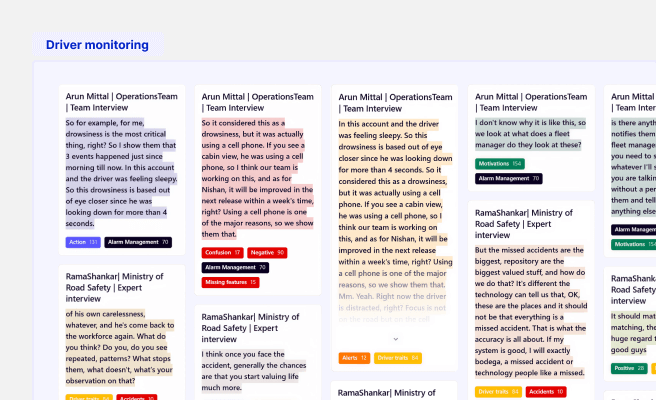Creative Process
<p>The creative process is an essential journey that transforms an idea into a tangible innovation. It is crucial for product design, as it drives the generation and development of new concepts, ensuring they meet user needs and preferences. This process is foundational in the climate tech sector, where designing sustainable solutions is imperative.</p>
<p>The creative process typically involves several stages, each contributing to the refinement and realization of an idea:</p>
<h2>Stages of the Creative Process</h2>
<p><strong>1. Preparation:</strong> This initial stage involves gathering information and resources. For a product manager in a software climate-tech company, this might include researching market trends, understanding user needs, and analyzing competitors. This preparation lays the groundwork for informed and innovative design decisions.</p>
<p><strong>2. Incubation:</strong> During this phase, the gathered information is internalized, allowing for subconscious processing. It's a period where the problem is set aside, giving the mind the freedom to explore various possibilities. Product managers often use this time to brainstorm and collaborate with their design teams, fostering a culture of creativity.</p>
<p><strong>3. Illumination:</strong> Also known as the "eureka" moment, this stage is where the idea or solution suddenly becomes clear. In the climate tech industry, this could mean conceptualizing a new feature that enhances user engagement with sustainable practices.</p>
<p><strong>4. Evaluation:</strong> Once an idea emerges, it undergoes critical evaluation. This involves assessing its feasibility, potential impact, and alignment with the company’s goals. For example, product designers might evaluate the prototype’s usability and sustainability, ensuring it meets both user and environmental standards.</p>
<p><strong>5. Implementation:</strong> The final stage is bringing the idea to life. This involves detailed designing, prototyping, testing, and refining until the product is ready for launch. Continuous feedback and iteration are vital, especially in climate tech, where user needs and environmental impact are constantly evolving.</p>
<h2>Real-World Examples and Tools</h2>
<p>One notable example in the climate tech space is the design of a carbon capture interface. Companies like <a href="https://www.climeworks.com/" style="color: #2896FF; text-decoration: underline;">Climeworks</a> utilize the creative process to develop user-friendly systems that promote carbon capture technologies. Their designs are not only functional but also engage users in the fight against climate change.</p>
<p>Tools like <a href="https://www.figma.com/" style="color: #2896FF; text-decoration: underline;">Figma</a> and <a href="https://www.sketch.com/" style="color: #2896FF; text-decoration: underline;">Sketch</a> play a crucial role in the creative process. These tools facilitate collaboration, prototyping, and user feedback, essential for refining ideas and improving the design’s efficiency and impact.</p>
<h2>Challenges and Solutions</h2>
<p>While the creative process is powerful, it can be challenging. Product managers often face tight deadlines, limited budgets, and the need for rapid iteration. In the climate tech industry, these challenges are amplified by the urgency of environmental issues.</p>
<p>To overcome these challenges, leveraging a dedicated design team or agency that understands the technical nuances of sustainability can be beneficial. These experts can streamline processes, provide rapid onboarding, and ensure that the design aligns with both user needs and environmental goals.</p>
<h2>Conclusion</h2>
<p>The creative process is vital in transforming innovative ideas into impactful products, especially in the climate tech sector. By following a structured approach, utilizing the right tools, and addressing challenges proactively, product managers and designers can create solutions that drive both user engagement and environmental sustainability.</p><p>We’re using the power of design to increase the adoption of climate technologies and innovation. View our work in climate to know more on how we can support your vision. <a href="https://www.whatifdesign.co/climate" style="color:#2896FF; text-decoration:underline;">View our climate projects</a>.</p> <p>Increase user engagement that converts your demos into sales. Optimise your UX strategies with our audits.
<p>Fill out the <a href="https://tally.so/r/n97pxQ" style="color:#2896FF; text-decoration:underline;">UX Audit form</a> to get started. Ready to discuss your needs? <a href="https://cal.com/akhilak/what-if-design?duration=25" style="color:#2896FF; text-decoration:underline;">Book a consultation call</a> with us today.</p></p>

Let's scale your impact with great design.
Free consultation, no sales pitch
Thank you! Your submission has been received!
Oops! Something went wrong while submitting the form.
Let’s talk
Nothing great is built alone.
Let’s connect about your vision, our work and how we can collaborate.
Get in touch

